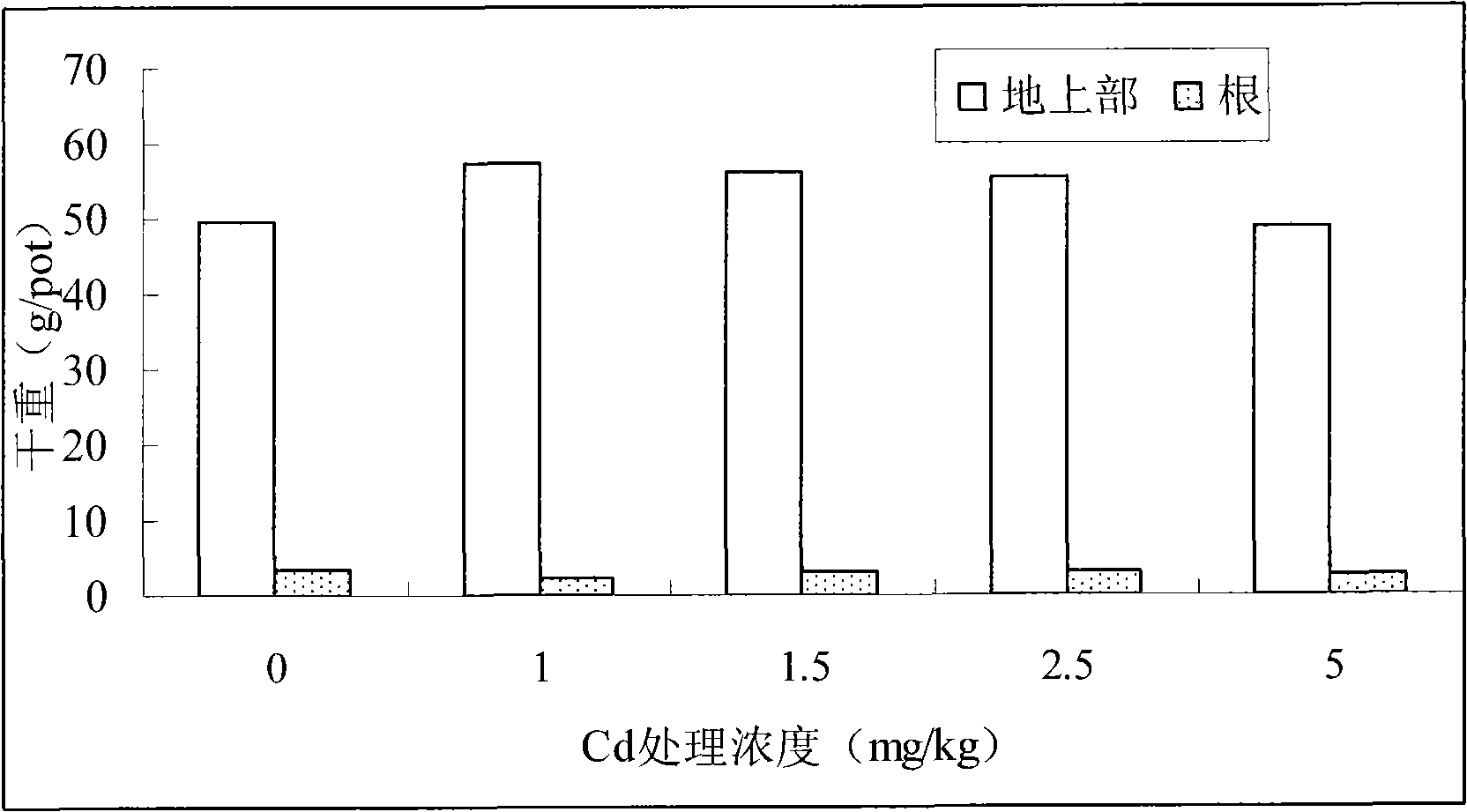Method for safe production in cadmium polluted soil by utilizing low cadmium accumulation type celery cabbage
A technology for safe production of cadmium-contaminated soil, applied in the field of safe production of cadmium-contaminated Chinese cabbage using low-accumulation cadmium, can solve the problems of little difference in absorption and enrichment of heavy metals, long repair period, expensive price, etc., and achieve high edible value and economic value, rapid growth, and small workload
- Summary
- Abstract
- Description
- Claims
- Application Information
AI Technical Summary
Problems solved by technology
Method used
Image
Examples
Embodiment 1
[0024] Example 1: Confirmation and simulation application of Chinese cabbage with low cadmium accumulation under potted gradient
[0025] The potting experiment site is located in the Shenyang Ecological Station of the Chinese Academy of Sciences, which is located in the center of the Lower Liaohe Plain, about 35km away from Shenyang City, and belongs to the warm temperate semi-humid continental climate. There is no pollution source around the experimental site, which is an uncontaminated area of heavy metals. The potting test soil was collected from the surface soil (0-20 cm) in the pollution-free area of the Shenyang Ecological Station of the Chinese Academy of Sciences. The soil type was meadow brown soil, and the heavy metal Cd content in the soil was 0.17 mg / kg.
[0026] There were 5 treatments in this experiment, each treatment was repeated 3 times, and the Cd concentrations (mg / kg) added were: 0 (control, no addition), 1, 1.5, 2.5, and 5. The Cd added in the experi...
Embodiment 2
[0034] Example 2: Field confirmation in Shenfu irrigation area and safe production of cadmium-contaminated soil
[0035] The experiment site is set in the experimental field of Shenfu Irrigation Area in Dongling District, Shenyang City, where the meteorological conditions are not much different from those of the Shenyang Ecological Station. The soil type is yellow brown soil, its physical and chemical properties are pH 8.5, organic matter 18.32mg / kg, total N 1.27mg / kg, total P 1.42mg / kg, available K 145.68mg / kg, total Cd 1.25mg / kg. Sow Chinese cabbage seeds directly in the cadmium-contaminated soil, with 3-6 cabbage seeds per hole, the hole spacing is 10-60cm, and the ridge spacing is 10-60cm. According to the abundance and shortage of soil moisture, water from wells from time to time (Cd is not detected in the water), so that the soil moisture is often kept at about 40-90% of the field water holding capacity; Dosage of urea. Harvest Fengyuanxin No. 3 after 60-85 days of gro...
PUM
 Login to View More
Login to View More Abstract
Description
Claims
Application Information
 Login to View More
Login to View More - R&D
- Intellectual Property
- Life Sciences
- Materials
- Tech Scout
- Unparalleled Data Quality
- Higher Quality Content
- 60% Fewer Hallucinations
Browse by: Latest US Patents, China's latest patents, Technical Efficacy Thesaurus, Application Domain, Technology Topic, Popular Technical Reports.
© 2025 PatSnap. All rights reserved.Legal|Privacy policy|Modern Slavery Act Transparency Statement|Sitemap|About US| Contact US: help@patsnap.com

